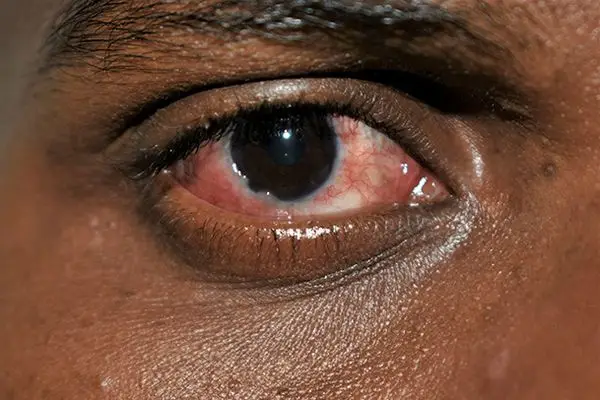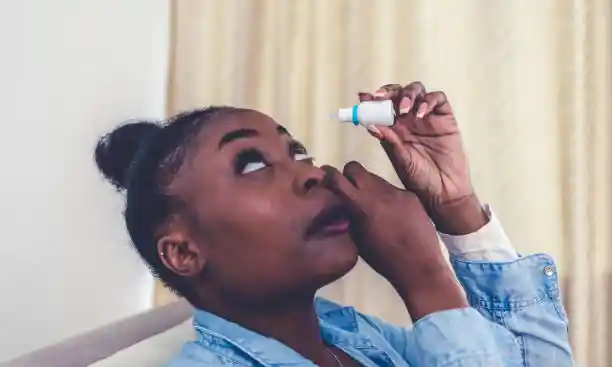
Types of eye drops for pink eye (conjunctivitis): Types and how to use them
Contact us for the best eye drops for conjunctivitis and all your eye needs: 0235535960
Some different types of pink eye drops include artificial tears, allergy eye drops, antibiotic eye drops, and antiviral eye drops. These medications may help relieve symptoms of the condition.
Certain eye drops may help treat all types of conjunctivitis. Antibiotic and antiviral eye drops may help treat infectious conjunctivitis, while allergy eye drops can help treat allergic conjunctivitis. Artificial tears may help ease symptoms in all cases of conjunctivitis. This article outlines eye drops for treating different types of conjunctivitis, how to apply them, and the typical outlook for people diagnosed with the eye condition. It also discusses when to contact a doctor.
Eye drops for conjunctivitis

According to the American Academy of Ophthalmology (AAO), eye drops may help treat some types of conjunctivitis.
Antibiotic eye drops may help treat bacterial conjunctivitis and allergy eye drops may help treat allergic conjunctivitis. Artificial tears may also help ease symptoms. Artificial tears are eye drops that help lubricate the eye. Generally, there is no treatment for viral conjunctivitis, as it usually resolves without treatment. Regardless of which type of conjunctivitis people have, it’s important that they avoid using any red-eye-reducing drops, such as Visine. These eye drops may worsen symptoms and feel uncomfortable if an infection causes conjunctivitis.
Learn about the difference between bacterial and viral conjunctivitis here.
Viral conjunctivitis
There is usually no treatment for viral conjunctivitis, and the condition often resolves within 1 to 2 weeks. People may use OTC artificial tears 4 times per day. People can look for preservative-free artificial tears, which they may be able to use up to 10 times per day. If the herpes simplex virus (HSV) is causing conjunctivitis, people may use eye drops containing trifluridine (Viroptic).
Bacterial conjunctivitis
People may be able to treat mild bacterial conjunctivitis at home using OTC artificial tears, which help lubricate the eye. Bacterial conjunctivitis usually improves within 2 to 5 days without treatment, but it may take up to 2 weeks to clear completely. Sometimes a doctor may prescribe antibiotic eye drops to help reduce the risk of complications or transmitting the infection to others. Antibiotic eye drops may help reduce the infection’s duration. Examples include:
- polymyxin b/trimethoprim (Polytrim)
- ciprofloxacin (Ciloxan)
- ofloxacin (Ocuflox)
- bacitracin/polymyxin B (Polysporin)
Allergic conjunctivitis
OTC or prescription anti-allergy eye drops may help treat allergic conjunctivitis. People may also find that artificial tears help relieve mild cases of allergic conjunctivitis. Artificial tears may help wash allergens from the eye and lessen itching or worsening of symptoms. OTC antihistamine eye drops may help treat allergic conjunctivitis. Examples include:
- ketotifen (Zaditor)
- olopatadine (Pataday)
A doctor may prescribe antihistamine eye drops to treat allergic conjunctivitis in more severe cases. These may include:
- cetirizine
- ketotifen
- olopatadine
- azelastine
- epinastine
- bepotastine
A doctor may also prescribe mast cell stabilizer eye drops, such as:
- disodium cromoglycate
- nedocromil
- lodoxamide
If people have persistent allergic conjunctivitis, they may need treatment with topical steroid eye drops, such as loteprednol etabonate (Alrex/Lotemax).
When to contact a doctor about conjunctivitis
People may be able to treat conjunctivitis with home remedies and over-the-counter (OTC) treatments. They will need to see a doctor if they have severe or worsening symptoms, such as:
- pain
- difficulty seeing
- sensitivity to light
- symptoms that have lasted a week or more or are worsening
- large amounts of pus or mucus from the eye
- other symptoms of infection, such as fever or body aches
How to apply eye drops
Apply eye drops by following these steps:
- Wash the hands thoroughly with soap and warm water.
- Remove contact lenses if wearing them unless a doctor has advised otherwise.
- Shake the eye drops and remove the cap, taking care not to touch the dropper tip.
- Tilt the head back slightly and look upward.
- Use one finger to gently pull the lower eyelid of the eye down, forming a pocket to drop the liquid into.
- Hold the dropper over the eyelid pocket without touching the eye with any part of the bottle.
- Gently squeeze the bottle to apply the correct number of drops.
- Close the eye and gently press a finger into the corner of the eye, next to the nose, for a few minutes so the eye can absorb the drops.
- Before opening the eye, use a clean cloth or tissue to wipe any excess drops or tears away.
- If people need to apply more than one type of eye drop, wait 3–5 minutes before using them.
- Wash the hands again after applying the eye drops.
Summary
People may be able to treat conjunctivitis at home with OTC eye drops, or artificial tears, which help lubricate the eye. Anti-allergy eye drops may help treat allergic conjunctivitis. Doctors may also prescribe antibiotic, antiviral, or anti-allergy eye drops depending on what’s causing the conjunctivitis.

Hospital is the real deal! I couldn't have asked for more than this. If you aren't sure, always go for hospital. Hospital was worth a fortune to my life.
– William Blake






